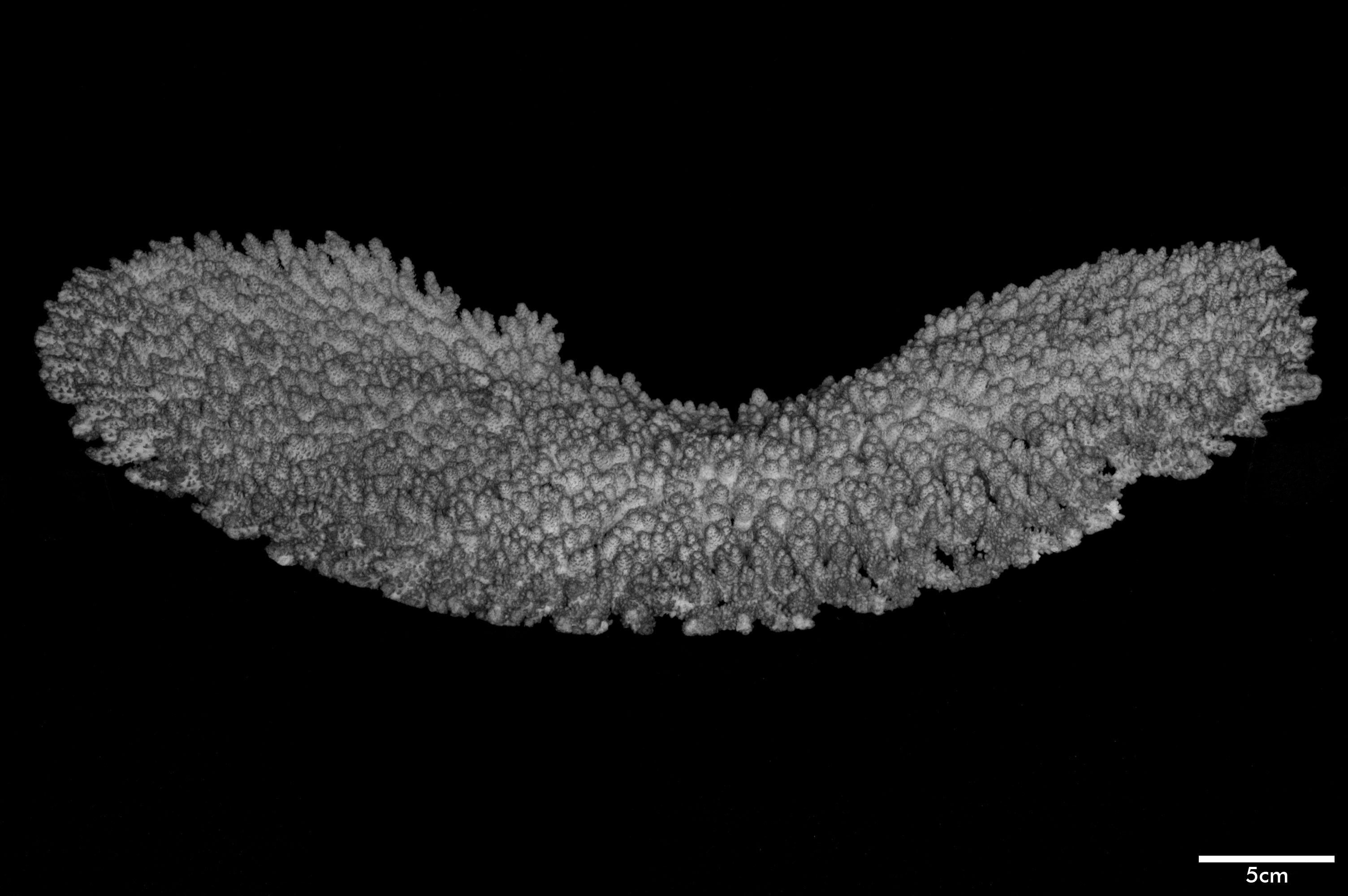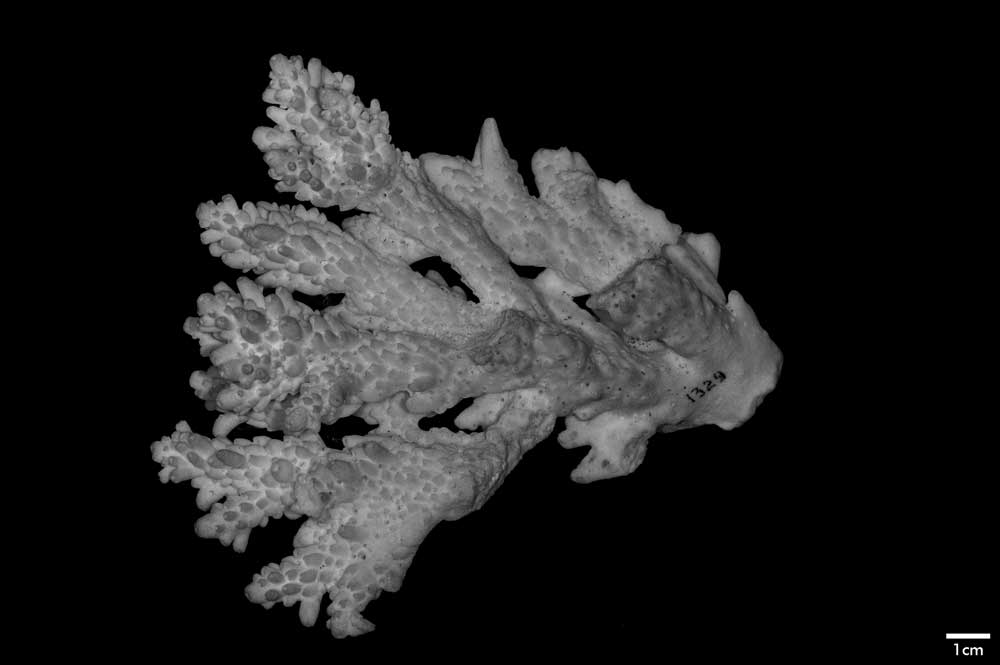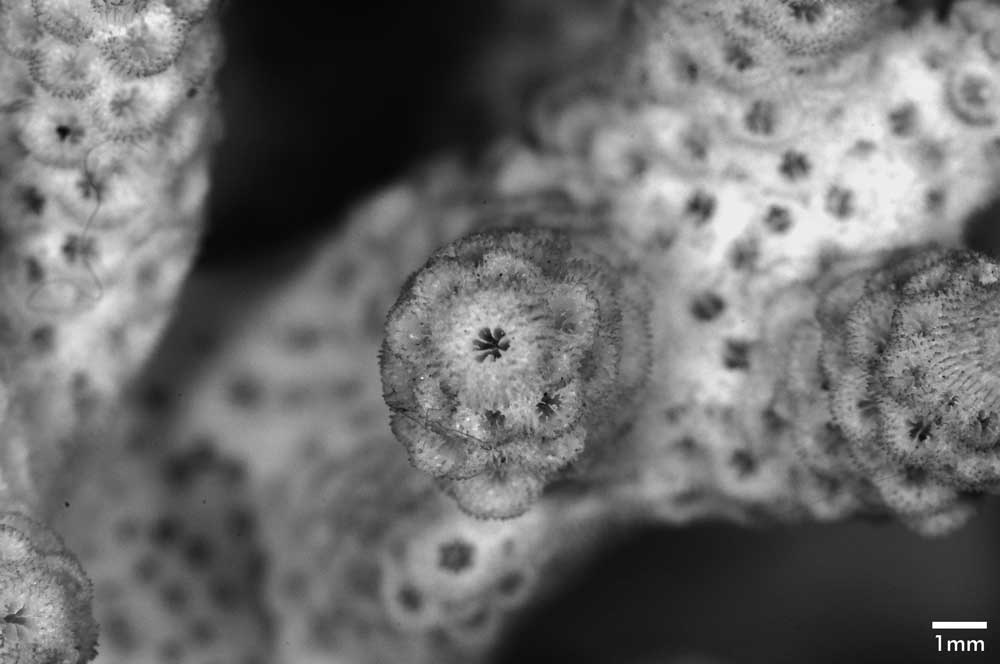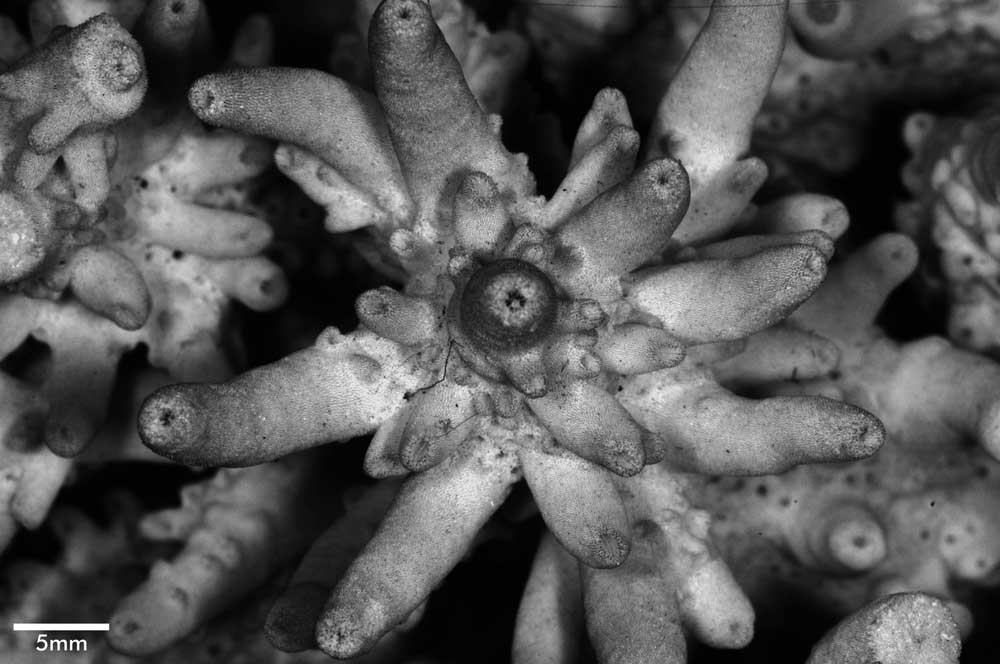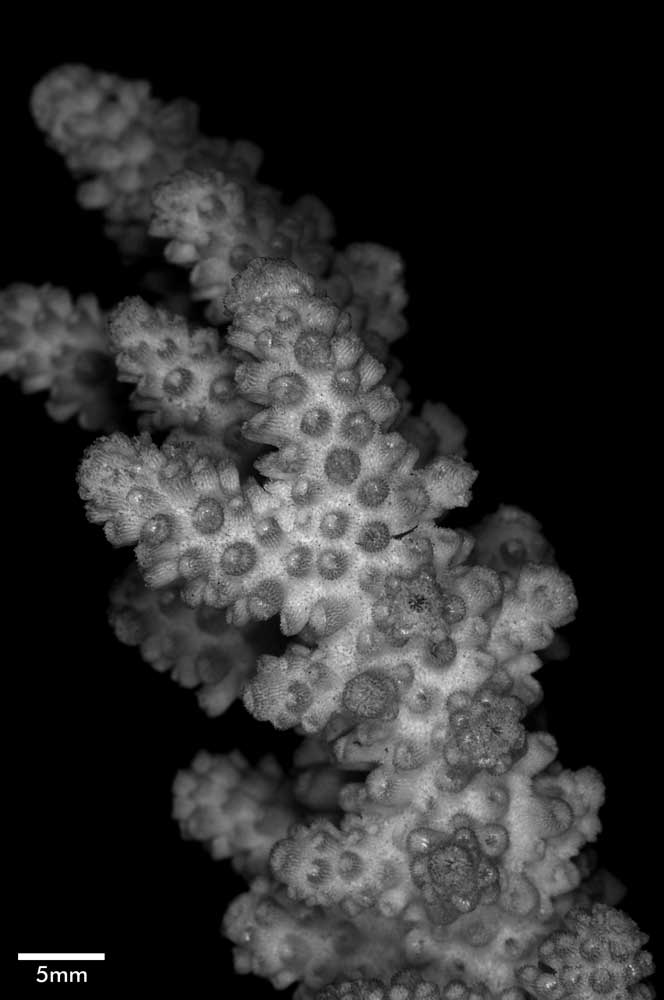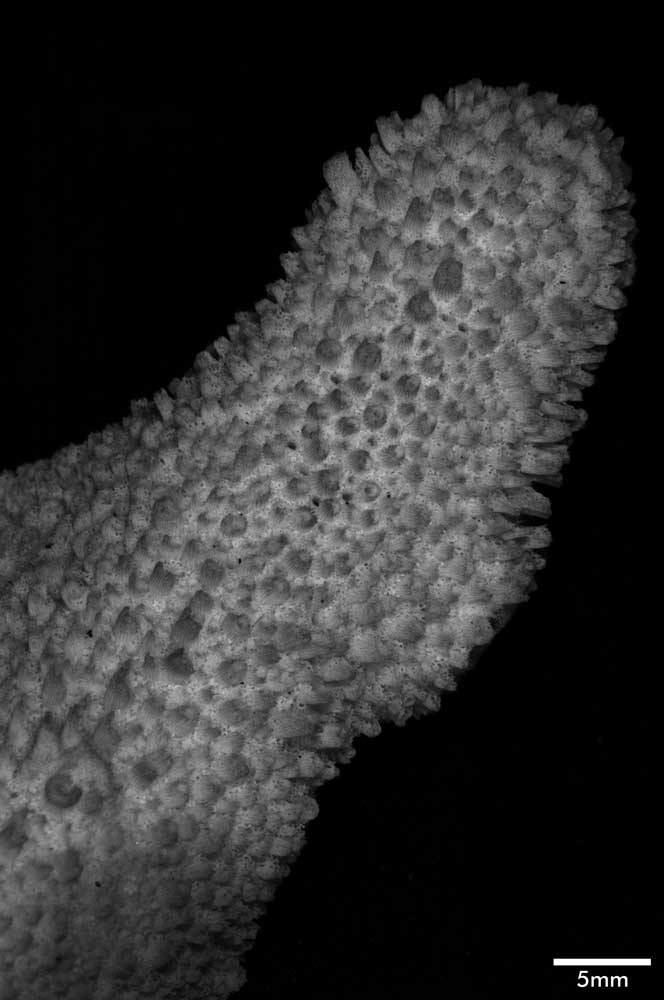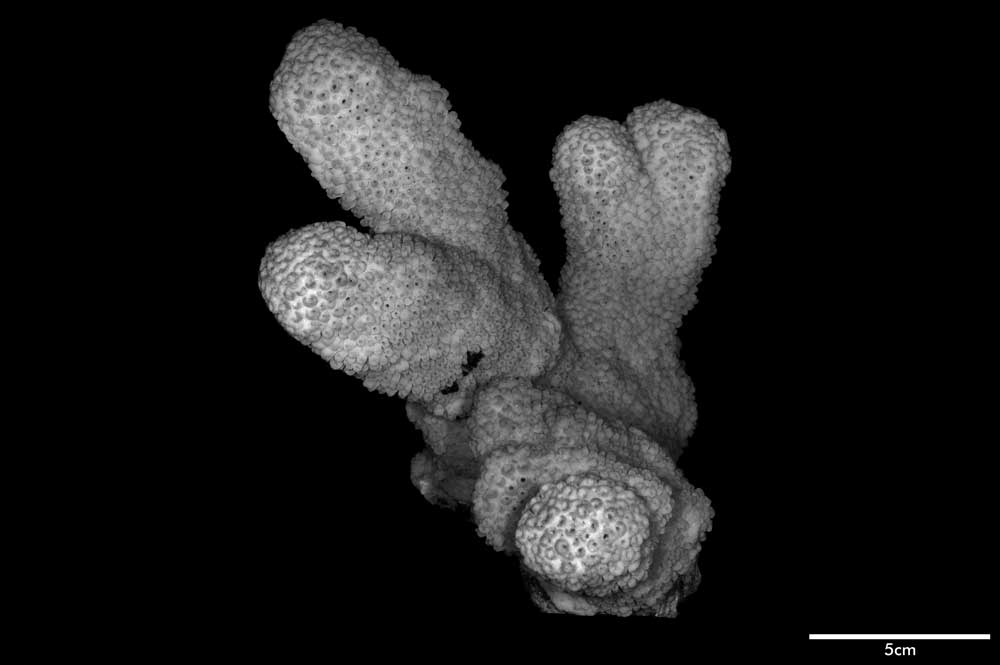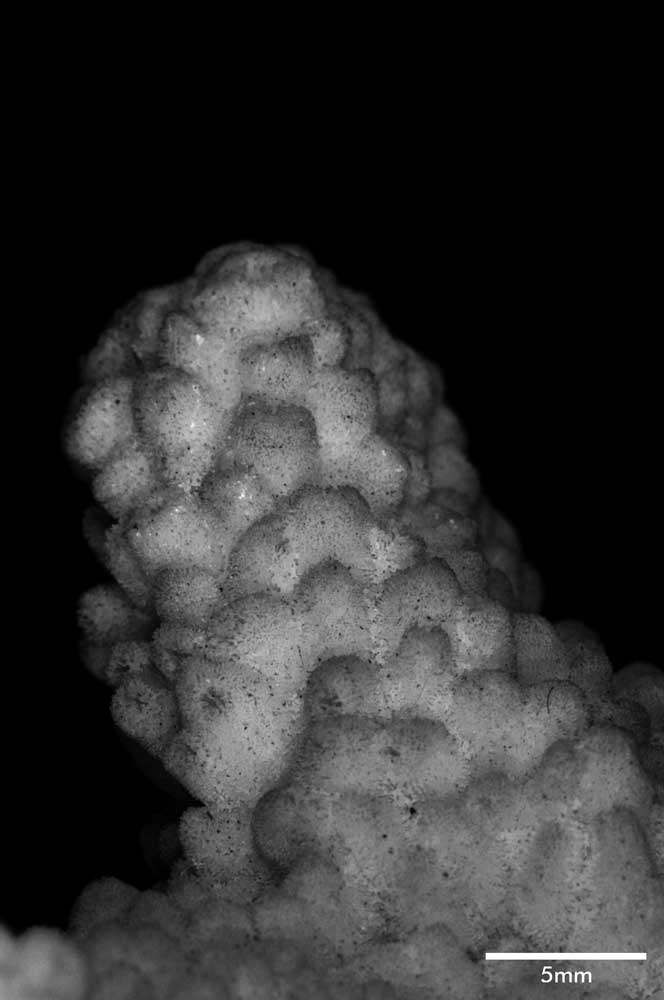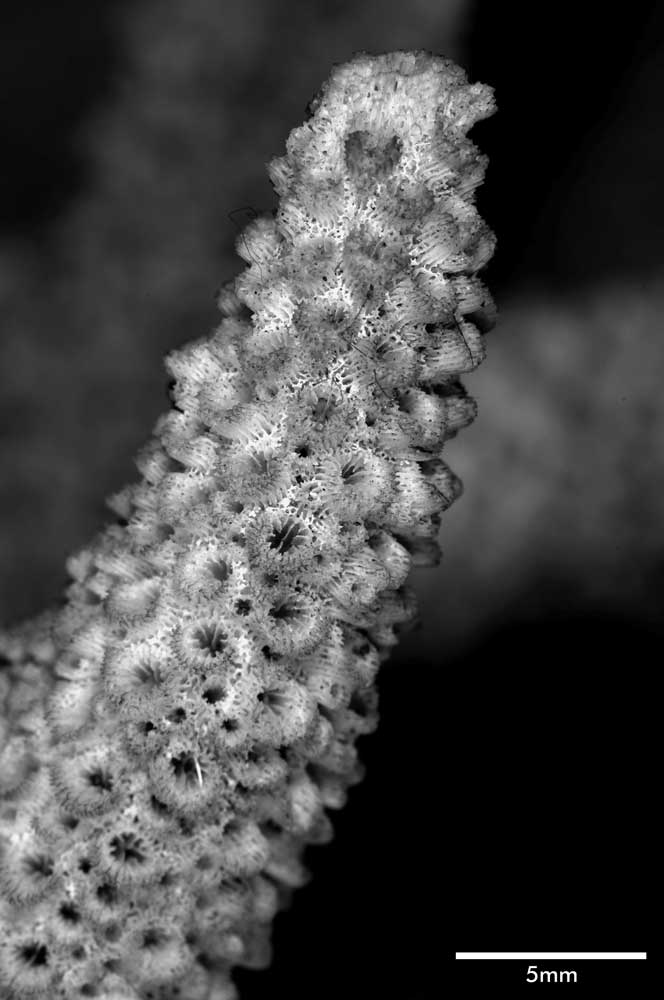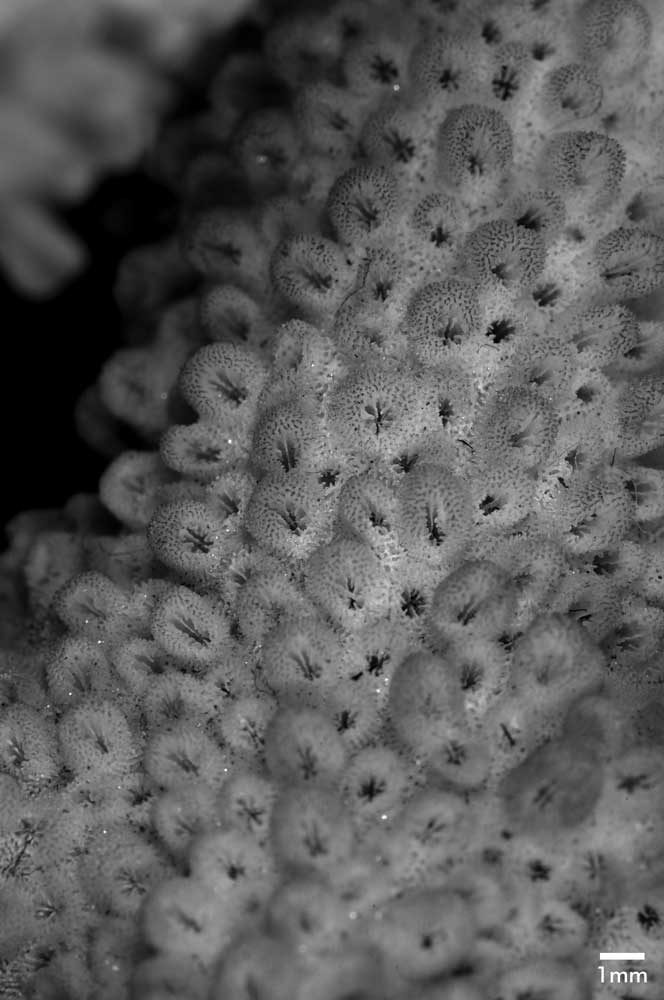Acropora meridiana
Nemenzo, 1971
Corallum arborescent. The main branches very irregular in diameter, being greatly modified by branchlets of various sizes, heights, and shapes; distantly coalescent. The terminal branchlets are tapering, club-shaped, conical or cylindrical. As a whole this coral looks gnarled and rugged. Diameter of main branches at intervals between branches 1.2 to 1.6 cm but at the level of the branchlets this dimension is inflated. Corallites unevenly disposed, not crowded - intercalicinal areas of various width present. An almost horizontal branch has more corallites on its upper side than on the lower. Some branchlets bear more than one axial corallites, preparatory to actual ramification.
Axial corallite either cylindrical or conical, all having well rounded edges. Cylindrical axial prominently exsert (2.5 mm) while conical ones are lower (at most 2 mm). Diameter ranges from 4 to 6 mm. Wall very thick, minutely porous, costae not evident because of abundance of spinules which are not arranged in rows. Its calice small, only a fourth of its diameter. Its primaries are narrow near mural edge but wider towards fossa, while secondaries half as wide and not widened at all.
Radials are generally conical with acute tips, the calices being on one side (not terminal in location), facing towards several directions. Some radials stand vertically, others are ascending, still others are completely adnate. They measure from 1 mm or less across to 2 mm, the bigger ones being taller and almost cylindrical. Wall thick, completely covered on the outside with very fine spinules of even height and fimbriated tips. Primaries wide, both or one of the directives stand out prominently being thicker than the others. Secondaries very poorly developed, sometimes completely absent.
Intercalicinal areas richly covered with spines of even height, their tips appearing granulous, coarser than those on calicular wall.
Remark:This coral is very close to A. brueggemmani (Brook). It differs from the older species by shape, attitude and disposition of the radial corallites, and the spines on the calicular wall being finer than those on the perithecal (intercalicinal) areass




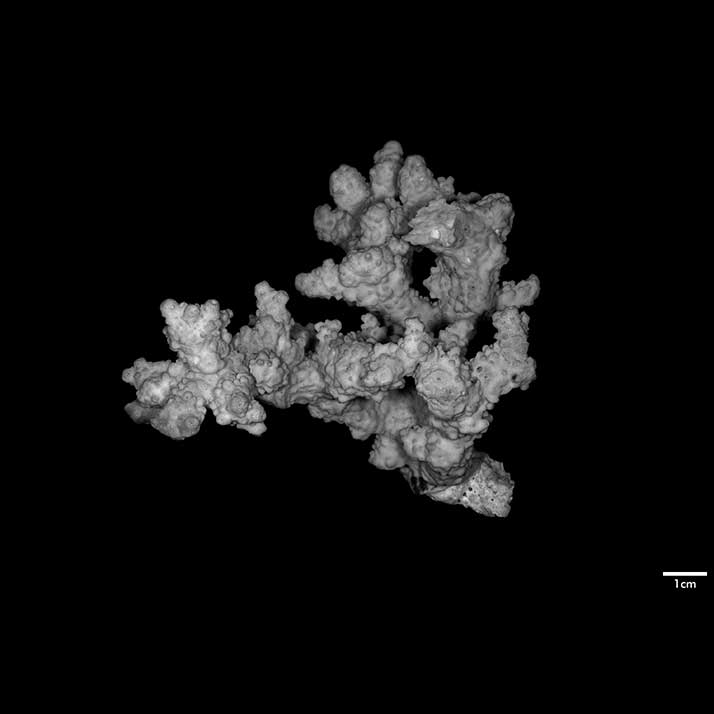
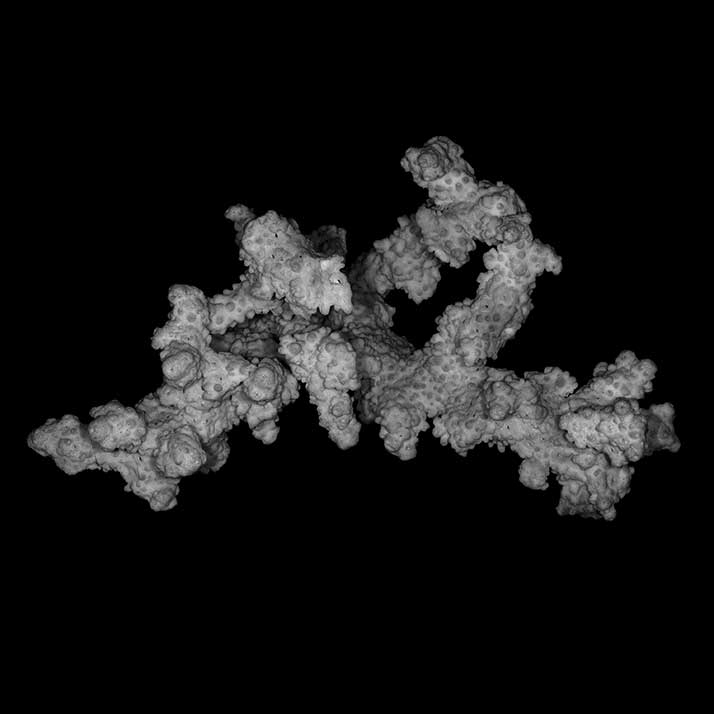
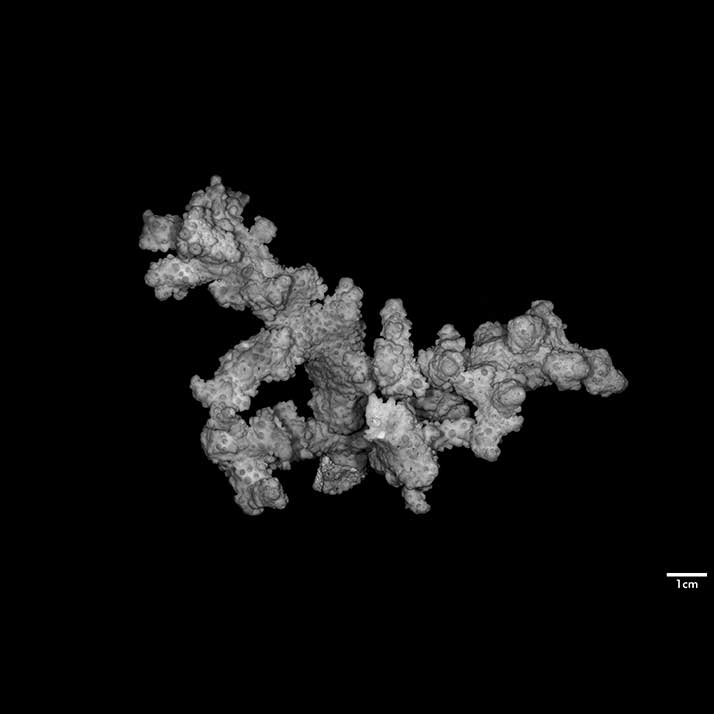
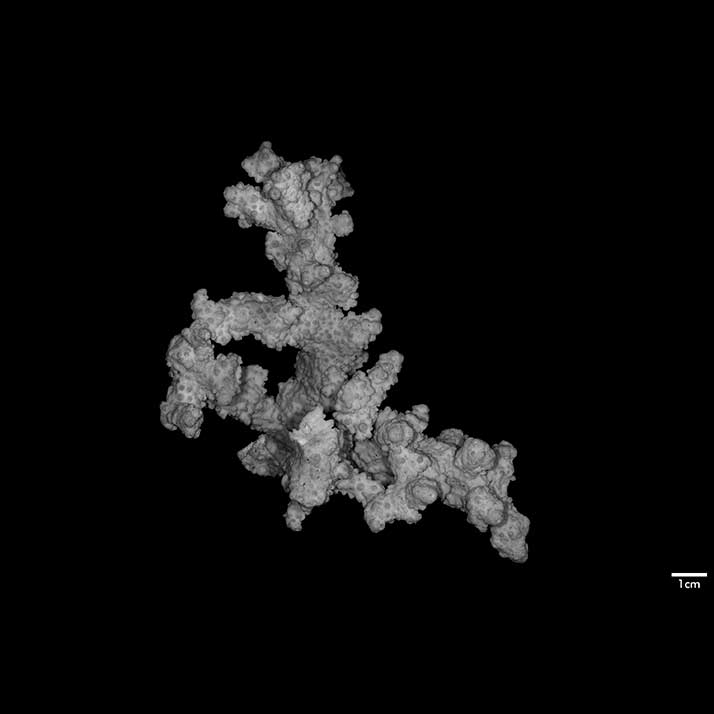





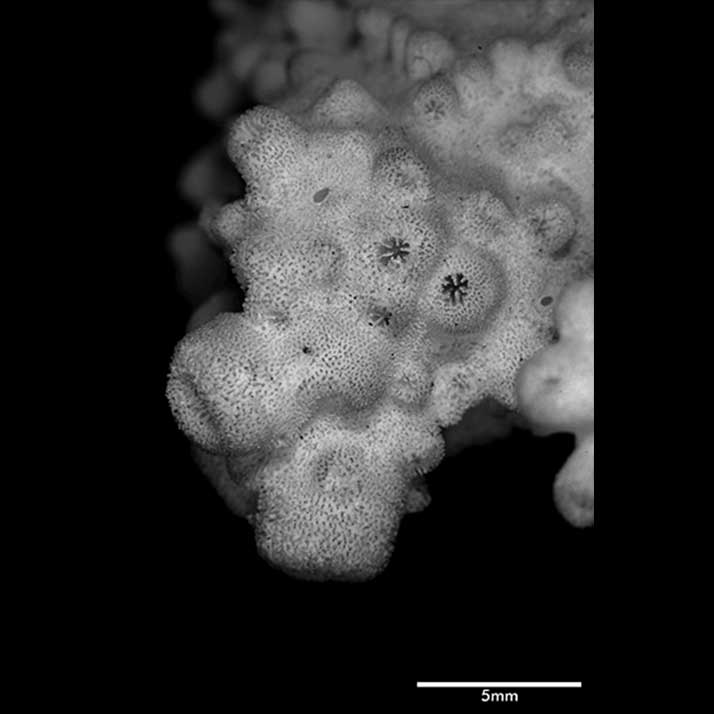


 Type Specimen Location:
Type Specimen Location:  Material:
Material:
